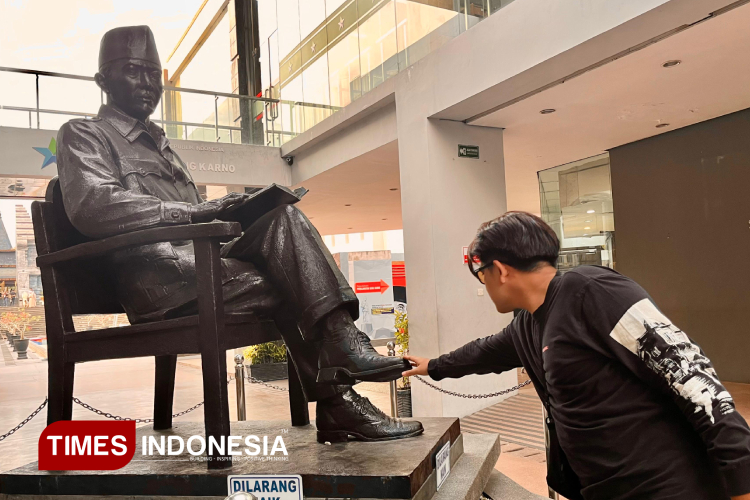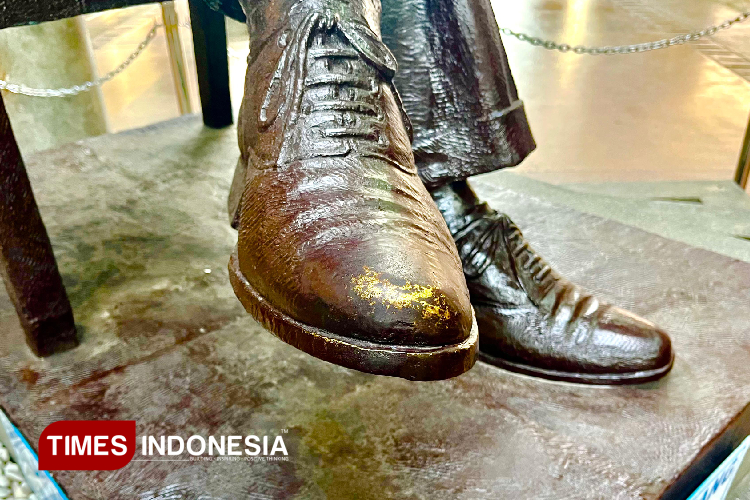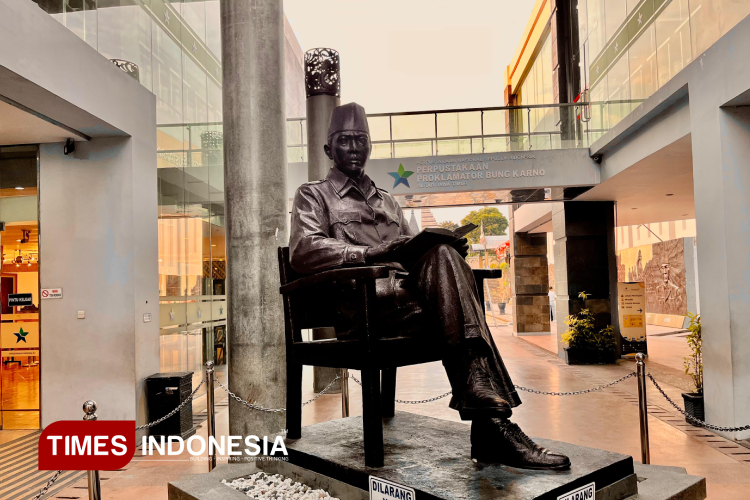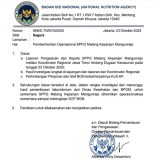TIMES MALAYSIA, BLITAR – The Bung Karno Statue (an honorific and popular name for Soekarno), created by Yogyakarta artist Gregorius Sidharta at the Bung Karno Gallery in Blitar City, is attracting visitors' attention. The statue's left shoe is widely believed to bring ease in achieving one's desires to anyone who touches it.
The statue stands in the complex of the Bung Karno Proclamator Library in Bendogerit Village, Sananwetan District, Blitar City. Made of bronze and weighing quintals (4.5 tons), the sculpture depicts Bung Karno sitting while reading a book, symbolizing his deep love for literature.
The Surrounding Area
The Bung Karno statue in Blitar is one of Gregorius Sidharta’s (a prominent scupture back then) last works before his death in 2004. The weight is an allusion to Indonesia's independence year, 1945. The statue's open-air placement symbolizes the close, limitless connection of humanity to God.
 A visitor is seen touching the left shoe of the Bung Karno statue at the Bung Karno Gallery, Blitar, which is believed to facilitate the fulfillment of one's desires. (PHOTO: Ardana Pramayoga/TIMES Indonesia)
A visitor is seen touching the left shoe of the Bung Karno statue at the Bung Karno Gallery, Blitar, which is believed to facilitate the fulfillment of one's desires. (PHOTO: Ardana Pramayoga/TIMES Indonesia)
Surrounding the Bung Karno statue in Blitar are 21 pillars symbolizing the date of the Proclamator's death, as well as carvings representing Indonesia's ethnic diversity.
The statue's environment includes a contemplative pool with five fountains symbolizing Pancasila (Indonesia's state philosophy based on five foundational principles).
There are also a copper relief by artist Sunaryo depicting Bung Karno’s life journey, and an amphitheater area for arts and cultural activities. All these elements form a complex that integrates art, history, and national symbolism.
The Myth of the Proclamator's Left Shoe and Visitor Suggestion
Another unique characteristic of the statue is the myth surrounding its left shoe. That section appears shiny compared to other parts due to frequent touching by visitors. The public believes that touching the left shoe of the Bung Karno statue can facilitate the fulfillment of wishes. Although there is no scientific evidence to support this, the phenomenon is understood as a form of positive suggestion.
Fadhillio Ibra Farissandro Abriakto, a Blitar youth with an interest in history, sees this myth as a means of motivation. "In my opinion, this is not about mysticism but a symbol to instill confidence. When we touch his left shoe, we implant a suggestion to be self-assured in achieving our goals," he said.
The Bung Karno Gallery management states that the phenomenon is left to the interpretation of visitors. They emphasize that the statue was created to honor Bung Karno as the father of the nation and a lover of literacy. The myth that has developed among the public is considered part of the social interaction between the artwork and visitors.
 The left shoe of the Bung Karno statue at the Bung Karno Gallery, Blitar, appears polished due to being frequently touched by visitors who believe in the motivational myth behind it. (PHOTO: Ardana Pramayoga/TIMES Indonesia)
The left shoe of the Bung Karno statue at the Bung Karno Gallery, Blitar, appears polished due to being frequently touched by visitors who believe in the motivational myth behind it. (PHOTO: Ardana Pramayoga/TIMES Indonesia)
All about Positive Thoughts
A psychological approach suggests that positive suggestion, whether self-induced or originating from the environment, can affect an individual's motivation. In the context of this statue, the touch on the left shoe becomes a symbol that confidence and optimism can strengthen the determination to achieve goals.
The Bung Karno statue in Blitar is not merely a monumental work of art but also a historical tourism icon that merges artistic value, culture, and motivational psychology. The existence of the left-shoe myth adds a dimension of interaction between visitors and the artwork, without diminishing the statue's historical significance.
With a design rich in symbolism and history, the statue remains a primary attraction for tourists visiting the Bung Karno Gallery. The polished left shoe on Bung karno Statue serves as a marker of the ceaseless interaction between the community and the artwork born from the dedication of an Indonesian sculpture maestro. (*)
Artikel ini sebelumnya sudah tayang di TIMES Indonesia dengan judul: From Legend to Ritual: The Tale of Soekarno’s Wish-Granting Shoe
| Writer | : TIMES Magang 2025 |
| Editor | : Khodijah Siti |

























